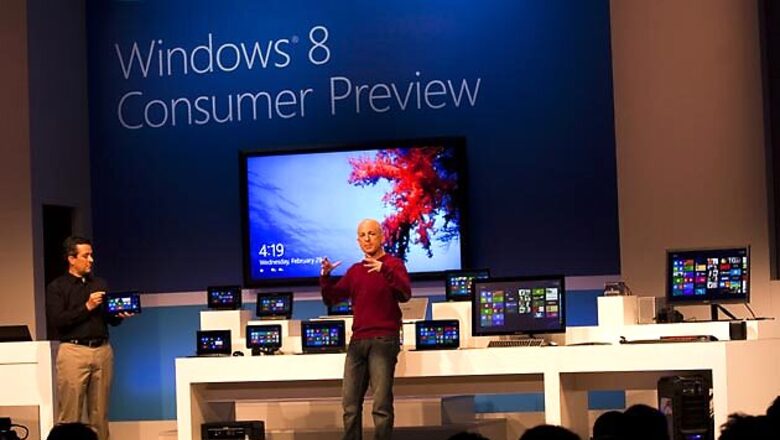
views
Seattle: The executive most widely tipped to be the next chief executive of Microsoft Corp has left the world's largest software company, barely two weeks after launching the flagship Windows 8 and Microsoft's first ever own-brand computer.
The departure of 23-year company veteran Steven Sinofsky, head of Microsoft's Windows unit, was unexpected and neither Microsoft CEO Steve Ballmer nor Sinofsky gave an explanation, although a senior executive at the company, who asked not to be named, said the decision was "mutual".
"This is shocking news. This is very surprising," said Brendan Barnicle, an analyst at Pacific Crest Securities. "Like a lot of people, I thought Sinofsky was in line to potentially be Ballmer's successor." Ballmer told employees in a memo on Monday simply that: "Steven Sinofsky has decided to leave the company."
In a later media statement, he added that it was "imperative that we continue to drive alignment across all Microsoft teams, and have more integrated and rapid development cycles for our offerings".
That could be interpreted as a criticism of Sinofsky, 47, known as an uncompromising leader who wielded immense power as head of the Windows unit, the traditional centre of Microsoft's strategy. It could also suggest that Ballmer, 56, was not happy with the pace of progress under Sinofsky.
"Within Microsoft's lead cycle, Sinofsky was delivering at the early edge of it," said Colin Gillis, an analyst at BGC Financial. "But now the competition has moved from a one-year cycle to a six-months cycle."
Leadership style
Sinofsky, who started his career at Microsoft as Bill Gates' technical assistant, later overhauled Microsoft's Office division before he was brought over to manage the release of Windows 7 in 2009.
That was regarded as a success and Sinofsky was then tasked with overseeing Windows 8, Microsoft's new-look, touch-friendly operating system, which was designed to bridge the gap with mobile computing leaders Apple Inc and Google Inc.
At the same time, Sinofsky led the development of Microsoft's Surface tablet, its first own-brand computer, aimed at tackling Apple's wildly successful iPad head on.
Analysts said it was too early to judge whether Windows 8 and the Surface have been a success, after launching on October 26, but Sinofsky's departure could have more to do with his abrasive management and ambition for the top job.
"It sounded like it had more to do with his leadership style," said Barnicle at Pacific Crest. "There wasn't really a next move for Steven at this point."
Sinofsky himself shed no light on his exit.
"It is impossible to count the blessings I have received over my years at Microsoft," he said in a statement. "I am humbled by the professionalism and generosity of everyone I have had the good fortune to work with at this awesome company."
He did not announce any plans to take a job elsewhere.
Sinofsky will be succeeded by Julie Larson-Green, who will head the Windows hardware and software division, and Tami Reller, who will remain chief financial officer of the Windows unit. Together, they will report directly to Ballmer.
















Comments
0 comment